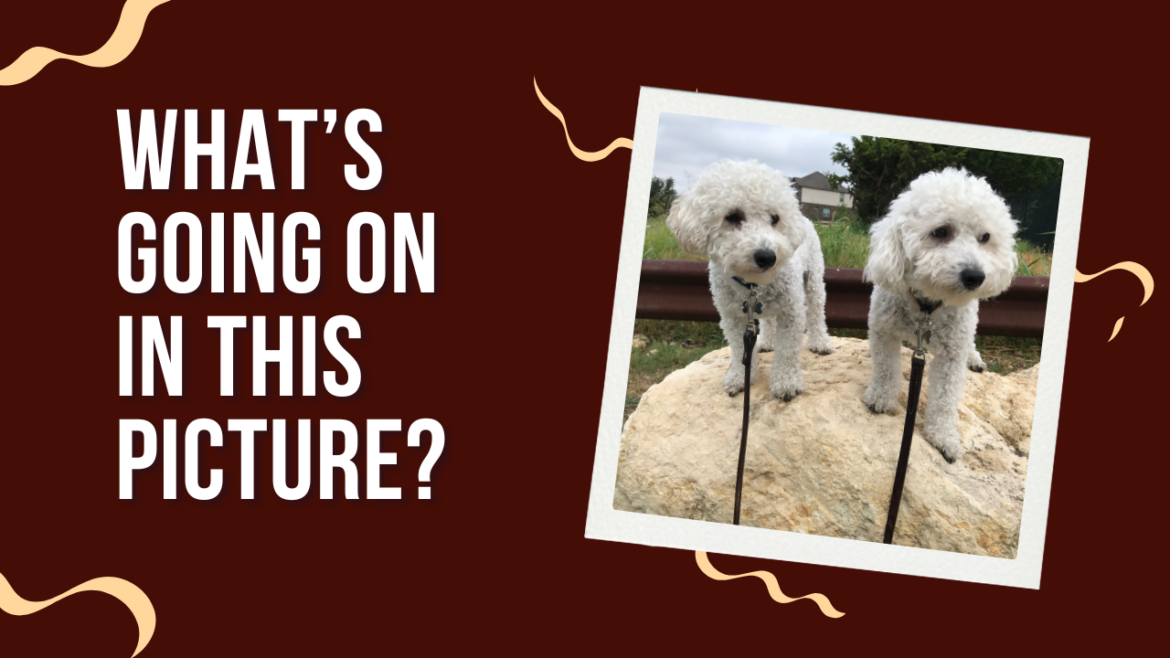As educators, we’re always looking for effective ways to engage students, spark their curiosity, and encourage critical thinking. One powerful yet simple strategy you can implement is the “What’s Going On in This Picture?” strategy. It encourages students to analyze, infer, communicate ideas, and more.
The “What’s Going On in This Picture?” Strategy to Engage Students
This strategy to engage students was originally developed by the New York Times. It involves presenting students with an interesting image that is stripped of its caption. Students are then asked to closely observe, analyze, and interpret what they see in the image. Rather than simply identifying the obvious details, students are encouraged to make inferences, ask questions, and engage in a collaborative discussion to uncover the deeper meaning and story behind the image.
How to Implement It in Your Classroom
To incorporate the “What’s Going on in this Picture?” strategy into your lessons, follow these steps:

- Select an image. Choose a thought-provoking image related to your subject area or learning objectives.
- Present the image. Display the image without any context or caption. Encourage them to observe the image closely and resist the urge to provide any context or background information.
- Guide your students through the process of analyzing the image by asking them open-ended questions. Some questions you could ask are:
- What’s going on in this picture?
- What do you see that makes you say that?
- What might have happened before or after …?
- What more can you find?
- Facilitate a discussion. Ask students to share their observations and interpretations in small groups or as a whole class. Encourage them to build upon each other’s ideas, ask clarifying questions, and respectfully challenge assumptions.
- Reveal the context. After the discussion, provide the image’s background information and connect it to your lesson.
- Extend the learning. You can extend the activity by having students write creative stories or conduct further research.
Why This Strategy Works
The strategy works because it goes beyond surface-level observations. It helps students dig deeper into the content. That is why it is powerful for all students. Below are additional benefits of the strategy:
- This activity pushes students to think critically and make connections between what they see and what they know. They must gather evidence, analyze it, and form interpretations.
- Rather than passively receiving information, students are actively constructing meaning. This engages them in the learning process, making lessons more memorable.
- It helps students develop communication skills. They learn to articulate their ideas clearly, listen to others, and respectfully engage in discussions.
- It boosts engagement because this strategy centers around open-ended questions. Students are free to explore multiple viewpoints, which makes it an inclusive and engaging activity for all learners. Every student has the opportunity to contribute, and there’s no pressure to provide the correct answer.
How to Use the Strategy Across Different Subject Areas
One of the best aspects of this strategy is that it can be adapted to any subject area. Here are a few ideas for using it in different subjects:
- History: Use historical photographs to analyze past events or time periods.
- Science: Present an image of a scientific phenomenon, such as a plant cell, a weather pattern, or a natural disaster, and ask students to infer what is happening.
- Math: Try this with graphs or charts, asking students to interpret the data and explain their reasoning.
- Language Arts: Use illustrations from literature or photographs that tell a story.
- Art: Analyze famous artworks or contemporary pieces to discuss techniques and meanings.
How to Incorporate Technology to Engage Students Further
Technology can be used with this strategy in order to make it more interactive and engaging. Here are a few ways you can incorporate technology:
- Padlet: Create a Padlet wall where students can post their observations about the image. They can add text, sticky notes, images, or links to support their ideas. They can also respond to their peers.
- Google Slides or Microsoft PowerPoint: Have students work collaboratively on slides where they can add text boxes, arrows, or highlight areas of the image to support their interpretations.
- Mentimeter: Turn the question “What’s going on in this picture?” into a live interactive poll with Mentimeter. Students can submit their responses, and you can display word clouds or charts that reflect their ideas.
- Canva: After the discussion, challenge students to create their own story about the image using Canva. Canva allows students to combine text, images, and design elements to bring their interpretations to life, creating a multimedia project that extends beyond the discussion. In addition, Canva’s Magic Studio can amplify your student’s stories.
- Google Sheets: If you’re using historical images, students can analyze the image and then place it on a timeline. For instructions on how to create a timeline from Google Sheets, see Eric Curt’s blog post, New Google Sheets Timeline Creator.
- Google Classroom: Share the image via Google Classroom and create a discussion thread where students can post their observations.
So next time you’re planning a lesson, consider kicking it off with a picture and the simple question: “What’s going on in this picture?” to engage students. You might be surprised at the conversations that unfold!


1 comment
If you are a STEM-related teacher, Chris Woods has great pictures you could use for this strategy. Follow him at https://x.com/dailystem